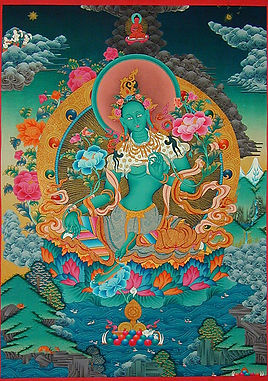

Culture - Thangka Paintings
Tibetan art has a strong Mahayana Buddhist influence and emphasizes the role of Bodhisattvas, compassionate beings who forgo their personal escape to Nirvana in order to assist others. From an early time various bodhisattvas were subjects of paintings, rugs literature and statuary art. Tibetan Buddhism, as an offspring of Mahayana Buddhism, inherited this tradition. A common bodhisattva depicted in Tibetan art is the Chenrezig deity (Avalokitesvara), often portrayed as a four or a thousand-armed saint with an eye in the middle of each hand, representing the all-seeing compassionate one who hears our requests. The Dalai Lama is believed to be his reincarnation. Thangka paintings, a union of Chinese scroll painting with Nepalese and Kashmiri painting, are rectangular and intricately painted on cotton or linen. They are usually traditional compositions depicting deities, famous monks, and other religious, astrological, and theological subjects, and sometimes Mandalas. The word "Thangka" means "something to roll" and refers to the fact that Thankas can easily be rolled up for transportation.



